The Japanese approach to skincare is less of a routine and more of a ritual. It’s a philosophy centered around prevention, hydration, and incredibly gentle care. The goal isn't a quick fix with aggressive treatments but nurturing your skin for its long-term health and resilience.
The Philosophy of Japanese Skincare
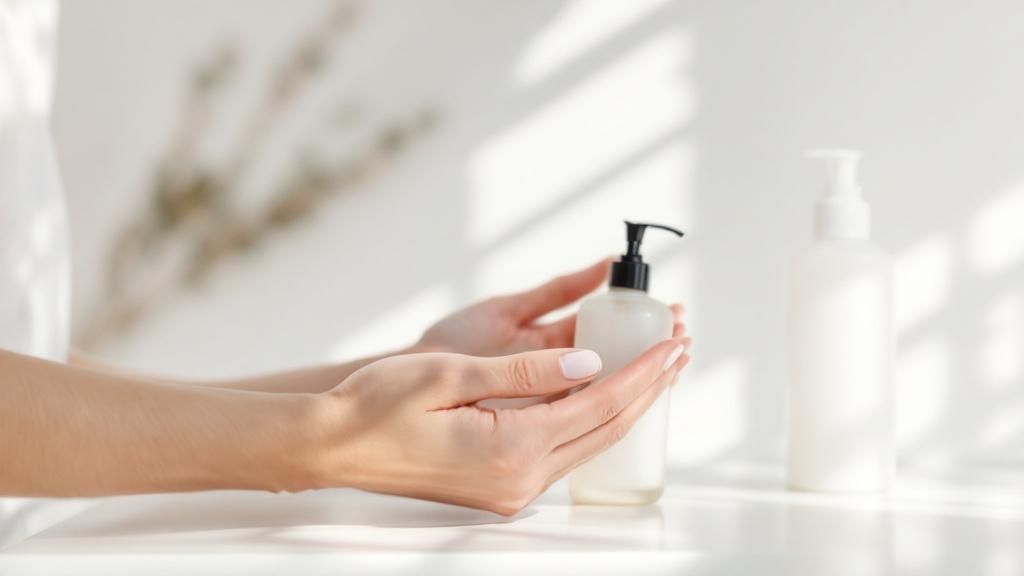
Before we jump into the specific steps, it’s really helpful to understand the mindset behind it all. At its heart, Japanese beauty—or J-Beauty—is about creating a strong, healthy skin barrier. This is a big departure from many Western routines that often lean on harsh exfoliants and powerful actives that can inadvertently strip the skin.
J-Beauty takes the opposite approach. It’s all about layering lightweight, moisture-packed products to achieve a very specific look and feel.
The Goal: Mochi Hada
In Japan, the ultimate complexion goal is known as mochi hada, which literally translates to "rice-cake skin." If you’ve ever seen a freshly made mochi, you know exactly what this means: plump, incredibly soft, and with a luminous, almost translucent glow. This isn't about covering up imperfections with makeup; it's about achieving that healthy radiance through consistent, gentle care that deeply hydrates from within.
This dedication to hydration and long-term skin health is exactly why J-Beauty has become a global phenomenon, with the market projected to hit USD 35.9 billion by 2025. While some routines boast ten or more steps, the core of J-Beauty really boils down to three pillars: cleansing, moisturizing, and sun protection.
Core Principles of J-Beauty
Grasping these foundational ideas is the key to making the Japanese skincare steps work for you. It helps you see why you're doing what you're doing and choose products that fit this nurturing philosophy. It’s all about treating your skin with patience and respect.
- Prevention Over Correction: The focus is on protecting skin from damage before it happens. This means being diligent about shielding it from UV rays and preventing dehydration in the first place.
- Gentleness is Key: Every single step is done with a light touch. The idea is to avoid stressing or irritating the skin's natural barrier. This is especially crucial, and you can learn more in our guide to Japanese skincare for sensitive skin.
- Layering for Hydration: Instead of slathering on one heavy, rich cream, the J-Beauty method builds deep, lasting moisture by applying multiple thin, watery layers.
Mastering the Double Cleanse Ritual

If there's one non-negotiable cornerstone of any J-beauty routine, it's the double cleanse. This isn't just about washing your face twice; it's a brilliant, strategic approach to getting your skin truly, deeply clean without stripping it of essential moisture. Think of it as creating the perfect, pristine canvas for all the nourishing steps that follow.
The whole philosophy is built on a simple scientific truth: "like dissolves like." This means oil-based cleansers are the only things that can effectively break down oil-based impurities—we’re talking makeup, sunscreen, and your skin's own sebum. Everything else, like sweat and daily grime, is water-based and needs a different type of cleanser. Using both ensures nothing gets left behind.
The First Cleanse: The Oil-Based Melt
This is where the heavy lifting happens. The goal here is to use a cleansing oil or balm to literally melt away the day's most stubborn layers. One of the most common mistakes I see people make is applying it to a wet face. Don't do it! Water will just get in the way, preventing the oil from properly grabbing onto all that makeup and sunscreen.
Start with completely dry hands and a dry face. Dispense the oil and gently massage it all over your skin in circular motions for at least a minute. This is a great time to give yourself a mini facial massage, focusing on areas where you have more makeup or congestion, like around your nose. After you've worked it in, add a little lukewarm water to your fingertips and keep massaging. You'll see the oil magically turn into a milky emulsion—that's it doing its job, lifting everything off your skin to be rinsed away.
Pro Tip: The first cleanse is your secret weapon against clogged pores. By dissolving stubborn sebum and product buildup, you stop breakouts before they even have a chance to start.
The Second Cleanse: The Water-Based Refresh
Now that the oil-based grime is gone, it's time for the second act. This step sweeps away any leftover residue, along with water-based impurities like sweat and dust. For this, you’ll want a gentle, low-pH foaming cleanser. Using a low-pH formula is key because it works with your skin's natural protective barrier (the acid mantle), keeping it happy and balanced instead of stripping it.
A little trick here is to create the lather in your hands before it touches your face. Work the cleanser into a rich, dense foam between your palms, then apply that soft cloud to your skin. This gives you an effective cleanse without any harsh rubbing or friction. Rinse well with lukewarm water and gently pat—never rub—your face dry with a clean, soft towel.
If you're trying to find the perfect first step for your routine, our guide to the best Japanese cleansing oil can help you navigate the options.
The beauty of the double cleanse is how easily you can adapt it.
- Full Glam Day? A rich, nourishing cleansing balm will cut through long-wear foundation and waterproof mascara like a dream.
- Just Sunscreen and Errands? A lighter-weight cleansing oil is all you need to get the job done.
This two-step process isn't just a routine; it's a foundational ritual that guarantees your skin is perfectly prepped and ready to drink up all the hydration you're about to give it.
A Guide to the Double Cleansing Method
To make it even clearer, here’s a simple breakdown of how the two phases work together to deliver that signature J-beauty glow.
| Cleansing Step | Purpose | Recommended Product Types | How to Apply |
|---|---|---|---|
| Phase 1: Oil Cleanse | To dissolve and lift oil-based impurities like makeup, sunscreen, and excess sebum. | Cleansing Oil, Cleansing Balm, Cleansing Milk | Massage onto dry skin for about a minute. Emulsify with a splash of lukewarm water, then rinse completely. |
| Phase 2: Water Cleanse | To wash away any remaining oil residue and water-based impurities like sweat and environmental dirt. | Foaming Cleanser, Gel Cleanser, Cream Cleanser (low-pH) | Lather product into a rich foam in your hands first. Gently cleanse damp skin, then rinse thoroughly. |
By mastering this method, you're not just washing your face—you're respecting your skin's natural balance and setting the stage for optimal health.
How to Layer Lotions and Essences for Deep Hydration
Now that your skin is perfectly cleansed, we can move into what I consider the heart of the J-Beauty philosophy: hydration. This is where the magic really happens, and it’s all about layering moisture to achieve that plump, glass-like finish known as mochi-hada. The two key players here are lotions (kesho-sui) and essences (biyoueki).

First things first: forget everything you know about Western toners. A Japanese lotion is not an astringent meant to swipe away leftover dirt. Instead, it’s a purely hydrating liquid designed to drench your skin in a foundational layer of moisture, softening it and prepping it for everything that comes next.
Lotion vs. Essence: What's the Difference?
While they both focus on hydration, they have distinct jobs. I like to use the analogy of a dry sponge. The Japanese lotion is the water that softens the sponge, making it pliable and ready to soak things up. The essence is like a concentrated liquid fertilizer you add afterward, packed with nutrients that can now penetrate deeply.
- Japanese Lotion (Kesho-sui): This is your first hydrator. It’s thin, watery, and its main purpose is to flood the skin with moisture right after cleansing. It helps balance your skin’s pH and gets it ready for more concentrated treatments.
- Essence (Biyoueki): Essences are still lightweight, but usually have a bit more substance or viscosity. They’re formulated with a higher concentration of active ingredients to target specific concerns, going a step beyond basic hydration.
When it comes to application, technique is everything. Pour a small amount into your palms, press them together to warm the product slightly, and then gently pat it onto your face and neck. Avoid rubbing! That patting motion is a classic J-Beauty technique; it helps the product absorb without pulling at your skin and also gives your circulation a nice little boost. Keep patting until your skin feels supple and quenched.
A core tenet of J-Beauty is that truly hydrated skin is healthy skin. By loading up on moisture first, you create the perfect environment for your serums and moisturizers to work their best.
Try This Pro-Tip: The Chizu Saeki Method
For an extra shot of intense hydration, you have to try the Chizu Saeki method. It’s a trick named after the legendary Japanese skincare expert, and it’s basically a quick, DIY sheet mask that works wonders.
Here’s how you do it:
- Grab a few thin cotton pads. The kind you can peel into layers are perfect for this.
- Soak them completely with your favorite Japanese lotion. Don’t be shy with it!
- Gently stretch the cotton pads out and place them on your cheeks, forehead, chin—anywhere you feel dry.
- Let them sit for just 3-5 minutes.
This little ritual forces the lotion to penetrate deeper, giving your skin a concentrated blast of moisture that leaves it looking incredibly plump and glowy. It's my go-to rescue remedy when my skin is feeling stressed or dehydrated.
Getting these foundational hydration steps right is so important. If you want to see how this fits into the bigger picture, you can master the Japanese skincare routine steps for glowing skin in our complete guide.
Getting Targeted Results with Serums and Emulsions
Now that your skin is hydrated and receptive from the lotion and essence, it's time to bring in the heavy hitters. This is the treatment phase, where we get specific with serums (biyoueki) and emulsions (nyueki) to tackle your personal skin goals head-on.
Think of a Japanese serum as your problem-solver in a bottle. These are lightweight, super-concentrated formulas that sink deep into the skin to deliver a powerful punch of active ingredients. Whether you're trying to fade stubborn dark spots, soften fine lines, or just get your glow back, the right serum is your most powerful tool.
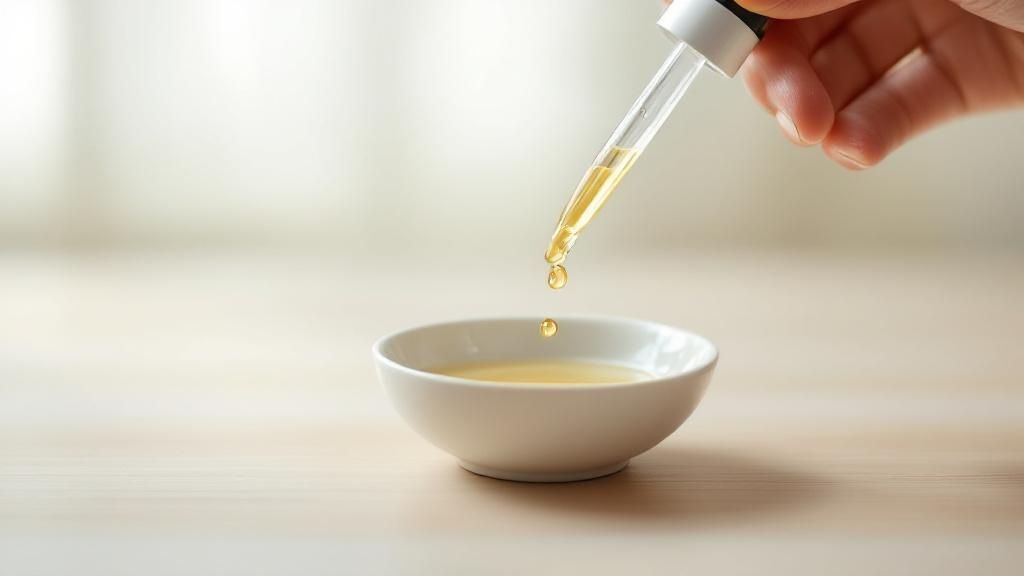
This focus on targeted, effective treatments is a huge reason J-Beauty is so popular. In fact, the Japanese skincare market was valued at USD 8.45 billion in 2024 and is projected to hit USD 12.52 billion by 2033. This growth is fueled by people like us wanting high-quality anti-aging and brightening products that actually work.
Finding the Right Serum for You
The trick is to choose a serum that aligns with your main skin concern. You really don't need a shelf full of them; one or two well-chosen serums will do the job beautifully.
Here’s a quick guide to some powerhouse Japanese ingredients:
- For Brightening and Fading Dark Spots: Keep an eye out for Vitamin C derivatives, tranexamic acid, and arbutin. They work wonders on sun spots and give your skin that sought-after luminous look.
- For Anti-Aging and Smoothing Lines: Retinol, peptides, and fermented rice (sake) are your go-to ingredients for boosting collagen and refining skin texture.
- For Soothing and Strengthening: If your skin is sensitive or easily irritated, look for cica (centella asiatica), licorice root extract, or ceramides. These will calm things down and help rebuild your skin's protective barrier.
If you've picked a hydrating serum, applying it correctly is key to seeing results. We have a whole guide on how to apply hyaluronic acid serum that's packed with tips to make sure you're getting every drop of goodness from it.
What’s the Deal with Emulsions?
Right after your serum comes the emulsion (nyueki). An emulsion is basically a very light, milky moisturizer. It serves two main purposes: it adds another delicate layer of hydration, and it creates a light seal over your serum to help lock in all those active ingredients you just applied.
For anyone with combination or oily skin, this step can be a total game-changer. Heavy creams can sometimes feel like too much, but an emulsion delivers just the right amount of moisture without feeling greasy. If you have very dry skin, you can even use an emulsion as an extra layer of hydration before you apply your final, richer cream.
Here's how it looks in practice: For my morning routine, I'll use a Vitamin C serum for antioxidant protection and follow it with a light emulsion. At night, I might switch to a peptide serum to focus on repair, then follow up with my regular moisturizer. Customizing your routine like this is what makes it so effective.
How to Seal and Protect Your Skin
After you’ve lovingly layered all that wonderful hydration and your targeted treatments, it's time for the final, crucial steps. This is where we lock everything in and shield your skin from the outside world. Think of it as sealing the deal, making sure all your hard work pays off by creating a protective barrier that keeps moisture in and stressors out.
Your Moisturizer: The Final Hydration Seal
The first part of this final stage is your moisturizer. I like to think of it as the lid on a pot of simmering soup—it stops all the goodness from evaporating. A good moisturizer creates an occlusive layer on your skin, which is essential for preventing what’s known as transepidermal water loss (TEWL).
That’s just the technical term for water escaping from your skin into the air. By stopping this, your moisturizer keeps your skin plump and hydrated all day or night.
Choosing Your Perfect Seal
Japanese moisturizers come in a beautiful variety of textures, so you can easily find one that feels just right. There's no "one size fits all" here; it’s all about listening to what your skin needs right now.
- For Dry or Mature Skin: Look for richer, more emollient creams. These are often packed with ingredients like ceramides or squalane, which beautifully mimic your skin's natural fats to fortify its barrier and provide deep, lasting comfort.
- For Oily or Combination Skin: A lightweight gel or milky lotion will be your best friend. These provide that necessary seal without feeling heavy or greasy, delivering hydration that won't clog your pores.
No matter the texture you choose, the job is the same: to create a final, comforting layer that seals in your essence, serum, and emulsion, leaving your skin incredibly soft and supple.
The Ultimate Non-Negotiable: Sunscreen
If the double cleanse is the foundation of the nighttime routine, then sunscreen is the absolute, undisputed champion of the morning one. In J-Beauty, sun protection isn't an afterthought; it’s the single most critical anti-aging and skin-protecting step you can take, period.
Japanese sunscreens are famous around the world for a reason—they defy every negative stereotype you might have. They’re cosmetically elegant, incredibly lightweight, and sink into the skin without a trace of stickiness or a dreaded white cast.
The Japanese skincare philosophy is built on prevention, and sun protection is its cornerstone. Consistently shielding your skin from UV damage is the most effective thing you can do to prevent premature aging and maintain a healthy, even complexion.
When you're shopping for a Japanese sunscreen, you’ll see two ratings on the bottle: SPF and PA.
- SPF (Sun Protection Factor): This number tells you how well it protects against UVB rays—the ones that cause sunburn and contribute to skin cancer.
- PA (Protection Grade of UVA): This is a Japanese rating system that measures protection against UVA rays. These are the rays that penetrate deeper into the skin, causing long-term damage like wrinkles, sagging, and hyperpigmentation. The rating goes from PA+ all the way up to PA++++, with more plus signs meaning higher protection.
For daily use, you really want the highest rating you can find, which is typically SPF 50+ and PA++++. This ensures you’re getting the best possible broad-spectrum protection. And don't forget to reapply every two hours if you're spending time outdoors. Many Japanese formulas are so light they can be patted gently right over makeup without messing anything up.
Common Japanese Skincare Questions Answered
Diving into a Japanese skincare routine for the first time usually sparks a few questions. It’s more than just a new set of products; it's a completely different way of thinking about your skin. Let's clear up some of the most common uncertainties so you can feel confident with every single step.
One of the first things people ask is if they really have to do all those steps, every single day. The honest answer? Absolutely not. The real philosophy behind J-Beauty is about listening to what your skin needs at that moment. A lazy Sunday morning might just call for a simple cleanse, lotion, and sunscreen. But after a long, dehydrating flight? That’s the perfect time to add a deeply hydrating sheet mask into the mix.
Do I Need Different Morning and Evening Routines?
Yes, and thinking about them with two distinct goals makes it all click.
Your morning routine is all about protection. It’s your shield for the day. After a quick cleanse (sometimes just a splash of water is enough), the focus is on hydrating and, most importantly, protecting your skin from UV rays and pollution.
Your evening routine, on the other hand, is dedicated to repair and replenishment. This is where you do the heavy lifting. You'll start with a thorough double cleanse to melt away makeup, sunscreen, and the day's grime. Then, you layer on your targeted treatments—like serums and richer moisturizers—to work their magic. Your skin's natural repair process kicks into high gear while you sleep, making it the ideal time to feed it the nutrients it craves.
Key Takeaway: Think of it this way: morning is for defense (sunscreen is a must!), and evening is for recovery (double cleanse and treatments). This simple mindset makes the entire routine feel much more intuitive.
Another big concern is breakouts. It's easy to worry that layering so many products will just clog your pores. But Japanese skincare products are known for their incredibly lightweight textures, formulated to absorb in a flash. If you're acne-prone, the double cleansing step is your best friend for keeping pores clear. For more targeted help, our guide on the top Japanese skincare products for acne in 2025 is a great resource.
How Long Should I Wait Between Steps?
This is a fantastic question, and it shows you’re really thinking about getting the most out of your products. There's no need to pull out a stopwatch, but a little pause makes a big difference.
The general rule of thumb is to wait until each layer feels mostly absorbed before you apply the next.
- For watery lotions (kesho-sui) and essences, this might only take a few seconds.
- For serums and emulsions, give it 30 to 60 seconds.
You're looking for your skin to feel plump and slightly damp, not wet or sticky. This little bit of patience allows each product to penetrate properly without pilling or diluting the next one.
The sheer size of Japan's skincare market shows how much thought goes into these routines. Skincare is the biggest piece of the pie, making up about 34.44% of the beauty market's revenue in 2024. This isn't just about selling products; it's driven by a culture of personalizing routines, with 62% of shoppers turning to influencers for advice on what will work best for them. You can dive deeper into these Japanese market trends at Mordor Intelligence.
Once you get the hang of these little details, your routine stops feeling like a chore and becomes a mindful, effective ritual that truly nourishes your skin.
At Buy Me Japan, we bring the best of J-Beauty directly to you. Start building your perfect routine and discover authentic, high-quality products today. https://buymejapan.com
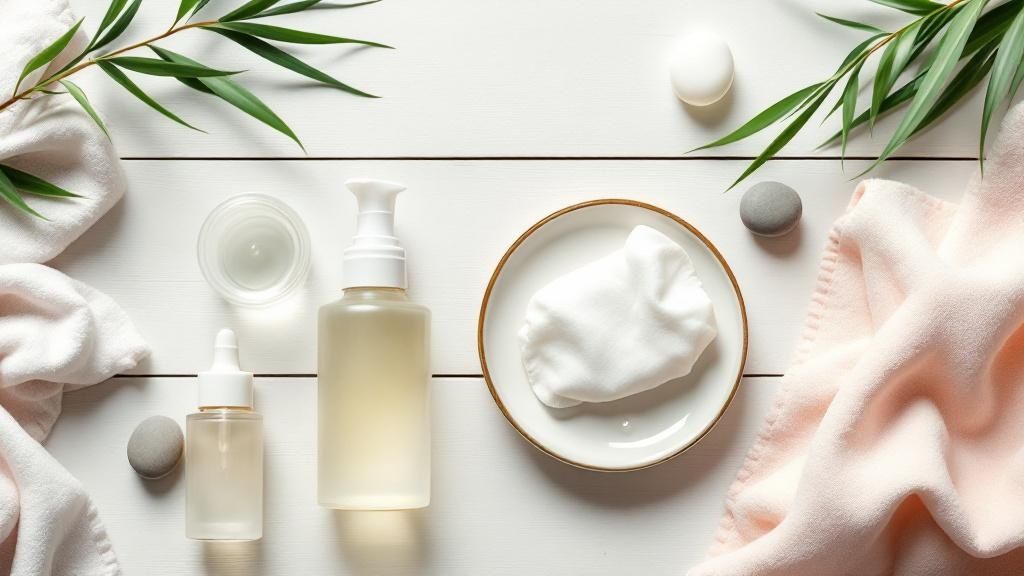

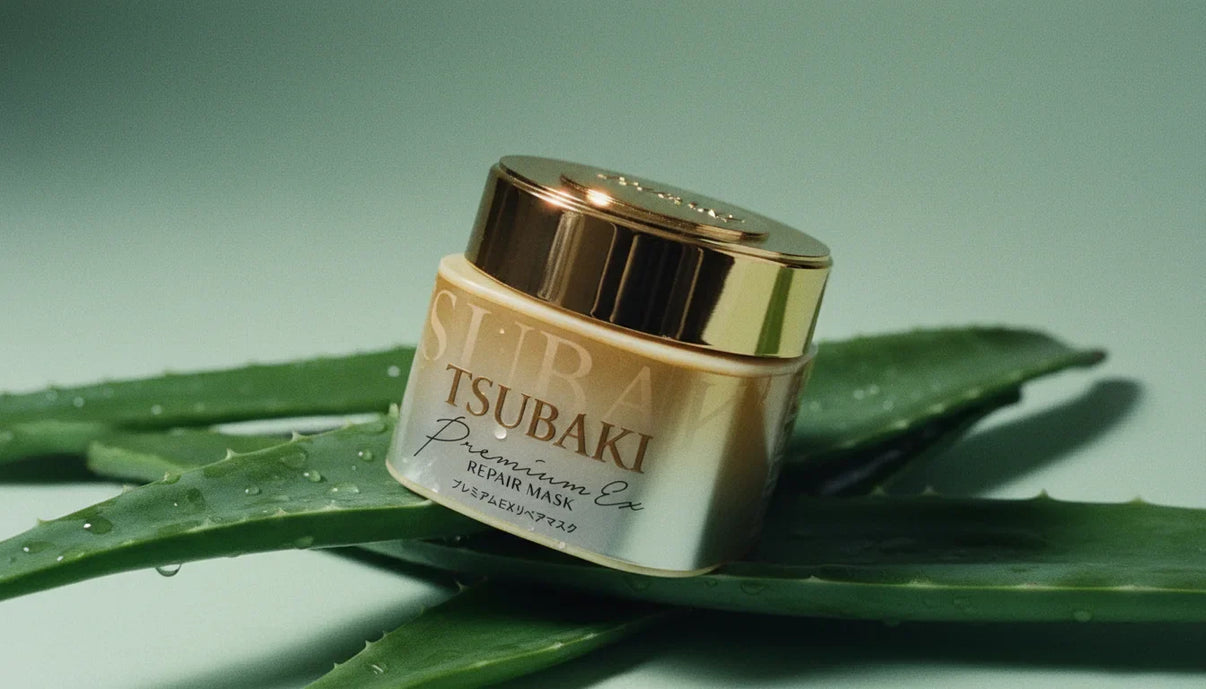
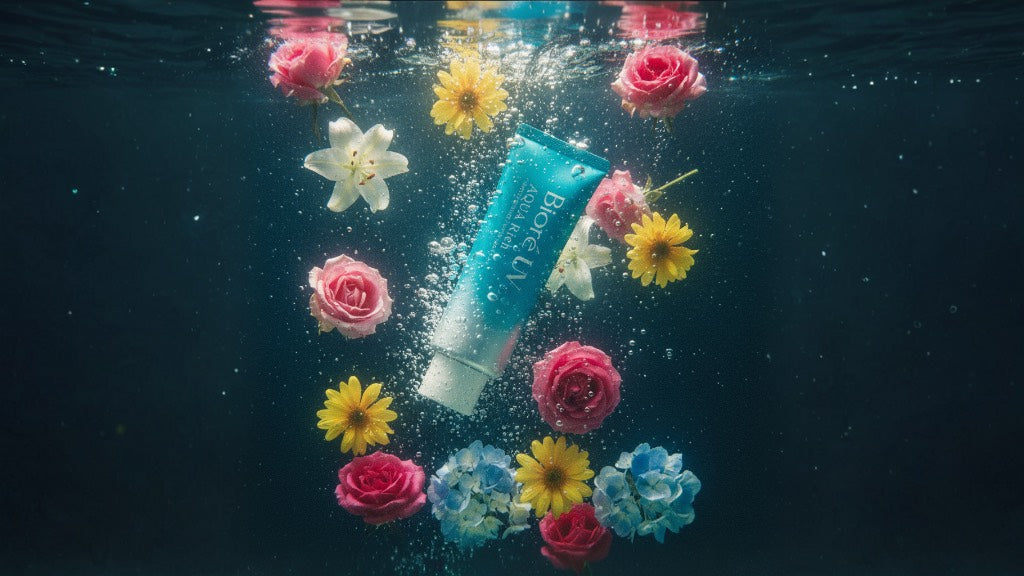
Share:
How to Apply Hyaluronic Acid Serum for Glowing Skin
Best Skincare Products Japan You Need to Try